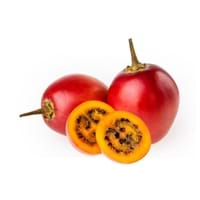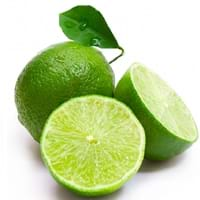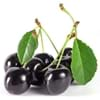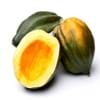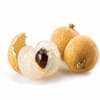Health Benefits
Cancer prevention, Improves eye vision, Prevents diabetes, Prevents high blood pressure
Arthritis treatment, Cholera treatment, Gout treatment, Heart care, Piles treatment, Scurvy treatment
General Benefits
Cures inflamed tonsils, Helps in weight loss, Maintains healthy cholesterol level
Cures fever, Digestive aid, Eye care, Maintains healthy cholesterol level, Treatment of common cold
Skin Benefits
Anti-aging benefits, Protects skin from oxidative stress
Anti-aging benefits, Skin rejuvenation, Treatment of acne, Treatment of dark spots
Hair Benefits
Protects hair
Promotes longer and healthier hair, Treatment of dandruff
Allergy Symptoms
Anaphylaxis, Coughing, Diarrhea, Eczema, Hives, Itching sensation in throat, Nausea, Skin Rashes, Runny nose, Sneezing, Swelling of mouth, tongue or lips, Vomiting, Wheezing
Breathing difficulty, Coughing, Eye irritation, Hives, Inflammation, Nasal congestion, Runny nose, Skin rash, Wheezing
Side Effects
Heart burn
Chances of sunburn
Best Time to Eat
Along with meal, As a snack in the late afternoon, Don't consume at night and before bed, Don't eat after meal, Morning time (before lunch)
Along with meal, Best to drink warm water with lime on an empty stomach, Don't consume at night and before bed
Vitamin B5 (Pantothenic Acid)
Vitamin C (Ascorbic Acid)
Vitamin K (Phyllochinone)
Phytosterol
Not Available
Calories in Fresh Fruit with Peel
Not Available
Not Available
Calories in Fresh Fruit without Peel
Calories in Frozen Form
Not Available
Not Available
Calories in Dried Form
Not Available
Type
Fruit vegetable
Citrus, Tree fruit
Season
All seasons
All seasons
Varieties
Tamarillo bold gold, Tamarillo red beau, Tamarillo tango and Tamarillo teds red
Key lime, Persian lime, Kaffir lime, Desert lime, Palestine Sweet Lime, Mexican Sweet Lime, Mary Ellen Sweet Lime
Color
Orange, Red, Yellow
Green
Inside Color
Creamy Yellow
Light Green
Taste
Tangy, Tart
Acidic, Sour
Origin
South Africa
India
Soil Type
Sandy loam, Well-drained
Clay loam, Sandy loam
Climatic Conditions
Rainfall, Warm
Sunny, Warm to hot climate
Facts about
- Up until 1967, tamarillos were referred to as tree tomatoes.
- The name tamarillo is derived from Maori word 'tama' which means leadership and rillo from spanish word 'amarillo' which means yellow.
- Lime is the called as the powerhouse of flavors.
- Fresh lime juice is so acidic that it can dissolve concrete.
- Limes are more fragrant and acidic than lemons.
- Persian limes are almost seedless and thorn less.
Top Producer
New Zealand
China
Other Countries
Australia, Chile, Colombia, Malaysia, Peru, Philippines
Argentina, Brazil, India, Mexico
Top Importer
United States of America
United States of America
Top Exporter
New Zealand
Mexico
Botanical Name
Solanum betaceum
Citrus aurantifolia
Synonym
tree tomato, genus Cyphomandra, Cyphomandra
not available
Subkingdom
Tracheobionta
Tracheobionta
Division
Magnoliophyta
Magnoliophyta
Class
Magnoliopsida
Magnoliopsida
Subclass
Asteridae
Rosidae
Order
Solanales
Sapindales
Family
Solanaceae
Rutaceae
Species
Solanum betaceum
C. aurantifolia
Generic Group
Nightshade
Citrus fruit
Difference Between Tamarillo and Lime
We might think that Tamarillo and Lime are similar with respect to nutritional value and health benefits. But the nutrient content of both fruits is different. Tamarillo and Lime Facts such as their taste, shape, color, and size are also distinct. The difference between Tamarillo and Lime is explained here.
The amount of calories in 100 gm of fresh Tamarillo and Lime with peel is Not Available and Not Available and the amount of calories without peel is 31.00 kcal and 30.00 kcal respectively. Thus, Tamarillo and Lime belong to Low Calorie Fruits and Low Calorie Fruits category.These fruits might or might not differ with respect to their scientific classification. The order of Tamarillo and Lime is Solanales and Sapindales respectively. Tamarillo belongs to Solanaceae family and Lime belongs to Rutaceae family. Tamarillo belongs to Solanum genus of Solanum betaceum species and Lime belongs to Citrus genus of C. aurantifolia species. Beings plants, both fruits belong to Plantae Kingdom.
